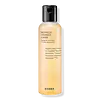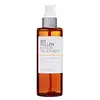What's inside
What's inside
 Key Ingredients
Key Ingredients

 Benefits
Benefits

 Concerns
Concerns

No concerns
 Ingredients Side-by-side
Ingredients Side-by-side

Propolis Extract
Skin ConditioningHoney Extract
HumectantButylene Glycol
Humectant1,2-Hexanediol
Skin ConditioningGlycerin
HumectantBetaine
HumectantCassia Obtusifolia Seed Extract
Skin ConditioningPanthenol
Skin ConditioningPolyglyceryl-10 Laurate
Skin ConditioningPolyglyceryl-10 Myristate
Skin ConditioningEthylhexylglycerin
Skin ConditioningSodium Hyaluronate
HumectantHydroxyethyl Acrylate/Sodium Acryloyldimethyl Taurate Copolymer
Emulsion StabilisingCaprylic/Capric Triglyceride
MaskingPropolis Extract, Honey Extract, Butylene Glycol, 1,2-Hexanediol, Glycerin, Betaine, Cassia Obtusifolia Seed Extract, Panthenol, Polyglyceryl-10 Laurate, Polyglyceryl-10 Myristate, Ethylhexylglycerin, Sodium Hyaluronate, Hydroxyethyl Acrylate/Sodium Acryloyldimethyl Taurate Copolymer, Caprylic/Capric Triglyceride
Pollen Extract
EmollientGlycerin
HumectantGlycereth-26
HumectantWater
Skin Conditioning1,2-Hexanediol
Skin ConditioningButylene Glycol
HumectantNiacinamide
SmoothingPentylene Glycol
Skin ConditioningDiethoxyethyl Succinate
SolventBetaine
HumectantChondrus Crispus Extract
Skin ConditioningPEG-60 Hydrogenated Castor Oil
EmulsifyingSaccharum Officinarum Extract
MoisturisingPolyglyceryl-2 Oleate
EmulsifyingSodium Citrate
BufferingEthylhexylglycerin
Skin ConditioningAdenosine
Skin ConditioningDimethicone
EmollientHelianthus Annuus Seed Oil
EmollientLavandula Angustifolia Oil
MaskingDisodium EDTA
Glyceryl Glucoside
HumectantCitric Acid
BufferingAlcohol
AntimicrobialHydrogenated Lecithin
EmulsifyingPelargonium Graveolens Flower Oil
MaskingAnthemis Nobilis Flower Oil
MaskingCananga Odorata Flower Oil
MaskingCitrus Aurantium Bergamia Fruit Oil
MaskingRosa Damascena Flower Oil
MaskingRoyal Jelly Extract
Skin ConditioningLeontopodium Alpinum Callus Culture Extract
AntioxidantAspalathus Linearis Leaf Extract
Skin ConditioningPropanediol
SolventButyrospermum Parkii Butter
Skin ConditioningAnthemis Nobilis Flower Extract
MaskingHoney Extract
HumectantPhenethyl Alcohol
MaskingChrysanthemum Boreale Flower Extract
AntioxidantPropolis Extract
Skin ConditioningCaprylyl Glycol
EmollientSodium Hyaluronate
HumectantMaltodextrin
AbsorbentHydrolyzed Royal Jelly Protein
Skin ConditioningPollen Extract, Glycerin, Glycereth-26, Water, 1,2-Hexanediol, Butylene Glycol, Niacinamide, Pentylene Glycol, Diethoxyethyl Succinate, Betaine, Chondrus Crispus Extract, PEG-60 Hydrogenated Castor Oil, Saccharum Officinarum Extract, Polyglyceryl-2 Oleate, Sodium Citrate, Ethylhexylglycerin, Adenosine, Dimethicone, Helianthus Annuus Seed Oil, Lavandula Angustifolia Oil, Disodium EDTA, Glyceryl Glucoside, Citric Acid, Alcohol, Hydrogenated Lecithin, Pelargonium Graveolens Flower Oil, Anthemis Nobilis Flower Oil, Cananga Odorata Flower Oil, Citrus Aurantium Bergamia Fruit Oil, Rosa Damascena Flower Oil, Royal Jelly Extract, Leontopodium Alpinum Callus Culture Extract, Aspalathus Linearis Leaf Extract, Propanediol, Butyrospermum Parkii Butter, Anthemis Nobilis Flower Extract, Honey Extract, Phenethyl Alcohol, Chrysanthemum Boreale Flower Extract, Propolis Extract, Caprylyl Glycol, Sodium Hyaluronate, Maltodextrin, Hydrolyzed Royal Jelly Protein
 Reviews
Reviews

Ingredients Explained
These ingredients are found in both products.
Ingredients higher up in an ingredient list are typically present in a larger amount.
1,2-Hexanediol is a synthetic liquid and another multi-functional powerhouse.
It is a:
- Humectant, drawing moisture into the skin
- Emollient, helping to soften skin
- Solvent, dispersing and stabilizing formulas
- Preservative booster, enhancing the antimicrobial activity of other preservatives
Betaine is a common humectant (a substance that promotes retention of moisture). It's known to be gentle on the skin and can help balance hydration.
This ingredient is best for improving hydration and soothing irritated skin. Studies also show it helps even out skin tone.
Fun fact: Betaine is naturally created in the skin and body. The kind found within cosmetic products can be either plant-derived or synthetic.
Another name for betaine is trimethylglycine.
Learn more about BetaineButylene Glycol (or BG) is used within cosmetic products for a few different reasons:
Overall, Butylene Glycol is a safe and well-rounded ingredient that works well with other ingredients.
Though this ingredient works well with most skin types, some people with sensitive skin may experience a reaction such as allergic rashes, closed comedones, or itchiness.
Learn more about Butylene GlycolEthylhexylglycerin (we can't pronounce this either) is commonly used as a preservative and skin softener. It is derived from glyceryl.
You might see Ethylhexylglycerin often paired with other preservatives such as phenoxyethanol. Ethylhexylglycerin has been found to increase the effectiveness of these other preservatives.
Glycerin is already naturally found in your skin. It helps moisturize and protect your skin.
A study from 2016 found glycerin to be more effective as a humectant than AHAs and hyaluronic acid.
As a humectant, it helps the skin stay hydrated by pulling moisture to your skin. The low molecular weight of glycerin allows it to pull moisture into the deeper layers of your skin.
Hydrated skin improves your skin barrier; Your skin barrier helps protect against irritants and bacteria.
Glycerin has also been found to have antimicrobial and antiviral properties. Due to these properties, glycerin is often used in wound and burn treatments.
In cosmetics, glycerin is usually derived from plants such as soybean or palm. However, it can also be sourced from animals, such as tallow or animal fat.
This ingredient is organic, colorless, odorless, and non-toxic.
Glycerin is the name for this ingredient in American English. British English uses Glycerol/Glycerine.
Learn more about GlycerinThis ingredient comes from honey made by bees. It is hydrating, antibacterial, anti-aging, and skin soothing.
Honey also contains amino acids, peptides, Vitamins A, C, and E.
The humectant property of honey draws moisture from the air to your skin. This makes it great at helping to hydrate the skin.
Honey may help reduce the signs of aging due to its antioxidant properties. Fun fact: darker honey has more antioxidants than light honey. The antibacterial property of honey may make it effective at helping to treat acne by killing acne-causing bacteria.
Many people wonder if honey extract is vegan. It is technically a byproduct from bees. This is because honey is created from the digestive enzymes in a bee's stomach.
Remember to be kind to bees :) They are important for many ecosystems and are endangered.
Learn more about Honey ExtractPropolis Extract is also known as bee glue.
This ingredient has antimicrobial, anti-inflammatory, wound healing, and antioxidant properties.
Studies show propolis helps fight against bacteria, viruses, and fungi. This may help with reducing acne and accelerate wound healing.
The flavonoids found in propolis extract are potent antioxidants. Antioxidants may help with reducing the signs of aging.
A study from 2020 found propolis to help reverse skin damage from UV.
Fun facts: This ingredient is created by mixing beeswax, bee saliva, and parts of trees. Bees use propolis as a sealant to close any gaps in their hives.
Since it is an animal-derived product, this ingredient is not considered vegan. For vegan alternatives, check out Galactomyces Ferment Filtrate or Centella Asiatica Extract.
Learn more about Propolis ExtractSodium Hyaluronate is hyaluronic acid's salt form. It is commonly derived from the sodium salt of hyaluronic acid.
Like hyaluronic acid, it is great at holding water and acts as a humectant. This makes it a great skin hydrating ingredient.
Sodium Hyaluronate is naturally occurring in our bodies and is mostly found in eye fluid and joints.
These are some other common types of Hyaluronic Acid:
Learn more about Sodium Hyaluronate